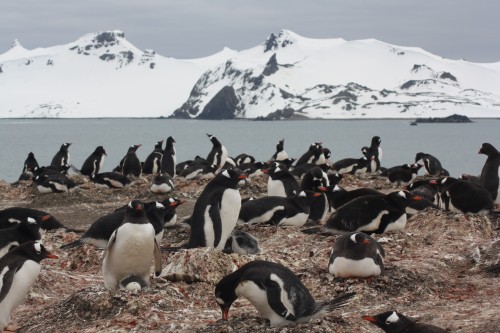Allaintoin

More Posts from Allaintoin and Others
Omaha Beach






PENGUINS ARE EATING MICROPLASTIC IN THE ANTARCTICA
Microplastics are widespread in the marine environment but are still poorly understood in Polar regions, particularly in the Antarctica. Now, an international study reveals the presence of microplastics in three penguin species from Antarctica and warns about the state of our southern ecosystems.
Now, an international study reveals the presence of microplastics across Antarctica, in three penguin species, chinstrap, gentoo and adélie penguins, and warns about the state of our southern ecosystems.
Researchers analyzed scat samples from chinstrap, gentoo and adélie penguins at breeding colonies across the Antarctic Peninsula and Scotia Sea, over seven seasons. They found microplastics are widespread across years and colonies in Antarctic Peninsula. These particles are mostly polyethylene and polyester, but also, in cellulose fibres. Results shows a similar frequency of occurrence of particles across all colonies, suggesting there is no particular point source for microplastic pollution in the Scotia Sea,
Researchers highlight the need for further assessment of microplastics in this sensitive region of the planet, the potential effects on penguins and other organisms in the Antarctic marine food web.
Photo: Gentoo penguin at Byers Peninsula, one of the locations included in the study. Photo by Andrés Barbosa (MNCN-CSIC)
Reference: Fragão et al., 2021. Microplastics and other anthropogenic particles in Antarctica: Using penguins as biological samplers. Science of The Total Environment.
Photo description: Gentoo penguin colony, with nearly 40 penguins, some of them are nesting in a free-ice area near the water.

Artist: Thomas Benjamin Kennington.



Azulejos
Málaga
Espanha
Fotos cjmn
"I dream of Jeannie"


The artist and his wife Arnold Böcklin
Some of the faces of the male hostages who won't be freed in phase one

![Charles André Reyne [1873-1917]](https://64.media.tumblr.com/6801e237eec49b995a9056448b8c7cab/eccb3e3b1b85f68f-b0/s500x750/714eb786e1a90939f1c4e4e55056b77828db7163.jpg)
Charles André Reyne [1873-1917]
Hunting Dog
Our newest unofficial video series—deep-sea animals that are cuter than your puppy. 🐶
Amphipods are often mistaken for tiny shrimp. They resemble shrimp in some ways, but are laterally compressed and have no carapace. They’re important food for many fishes, invertebrates, seabirds, and even marine mammals. Amphipods are mostly detritivores (eating decomposing plant and animal parts, as well as feces) and scavengers. Amphipods in the genus Scina, like the cutie in this video clip, can emit their own light (bioluminescence). Researchers have recorded this light and found that it is among the shortest wavelengths of light produced by any known organism!
-
 l1terat1 liked this · 1 month ago
l1terat1 liked this · 1 month ago -
 kurotaurus17 reblogged this · 1 month ago
kurotaurus17 reblogged this · 1 month ago -
 happyzenmonk liked this · 2 months ago
happyzenmonk liked this · 2 months ago -
 imaginehernude liked this · 2 months ago
imaginehernude liked this · 2 months ago -
 fishperson reblogged this · 2 months ago
fishperson reblogged this · 2 months ago -
 fishperson liked this · 2 months ago
fishperson liked this · 2 months ago -
 ichigen511 liked this · 2 months ago
ichigen511 liked this · 2 months ago -
 jesusmartin liked this · 2 months ago
jesusmartin liked this · 2 months ago -
 recklesslyinfatuated2 liked this · 2 months ago
recklesslyinfatuated2 liked this · 2 months ago -
 russalex reblogged this · 2 months ago
russalex reblogged this · 2 months ago -
 peculiarmutterings liked this · 2 months ago
peculiarmutterings liked this · 2 months ago -
 slickshitengineering reblogged this · 2 months ago
slickshitengineering reblogged this · 2 months ago -
 madkreator liked this · 2 months ago
madkreator liked this · 2 months ago -
 allaintoin reblogged this · 2 months ago
allaintoin reblogged this · 2 months ago -
 allaintoin liked this · 2 months ago
allaintoin liked this · 2 months ago -
 aboutoriginality reblogged this · 2 months ago
aboutoriginality reblogged this · 2 months ago